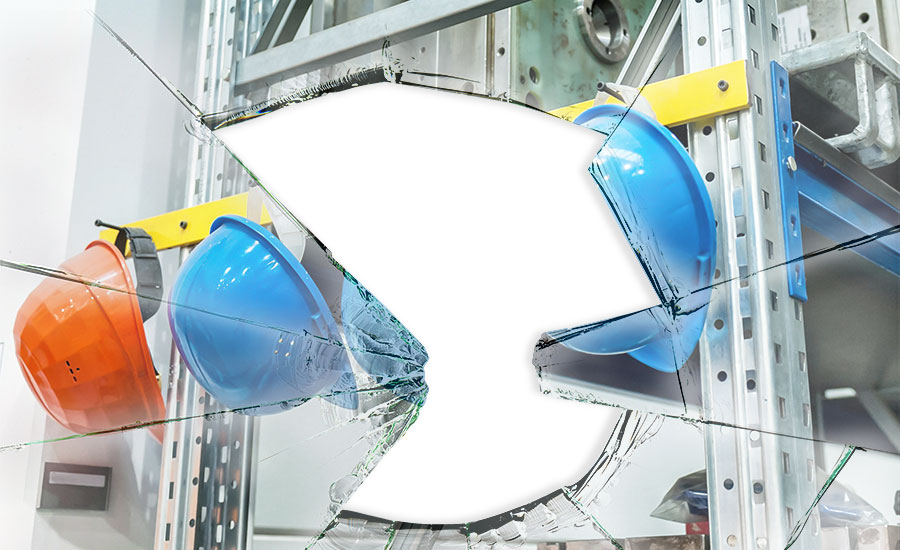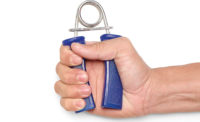Among the early EHS technology adopters: Bechtel, Turner, Clark Construction, Allergen, Siemens. There are others, mostly Fortune 500 companies. What EHS technologies are they using?
- Smart PPE- Examples: wearable 130dB personal protection alarm; wearable safety light that wraps around arm, calf, ankle or shoe; wearable GPS tracker that connects to an app on phones through Bluetooth; fused sensor technology implanted in safety clothing, construction garments equipped with wearable tech that frees hands from holding smartphones to access information to increase safety and productivity.
- Google Glass that allows an auditor to look at the same item at the same time as a technician does. An optical head-mounted display, designed in the shape of a pair of eyeglasses, shows information in a smartphone-like hands-free format. Users communicate with the Internet via natural language voice commands.
- Drones for confined space entry and cell tower, wind farm and oil rig auditing.
- EHS management information system software to collect and do real-time analysis of EHS performance across an entire enterprise. Dashboards provide real-time insight into key performance indicators.
- Predictive analytic software that identifies EHS risks and risk patterns in the workplace.
On the market today
Many other safety apps – hundreds with many more on the way – are on the market, including:
- Machine sensors and monitoring software;
- Remote, real-time wireless environmental monitors; emergency notification wearables;
- Mobile checklists; mobile inspections, observations and incident and hazard reporting; software that tracks, reports and manages safety data;
- Asset management software that tracks inventory and logs maintenance tasks;
- Safety glasses that monitor safety threats, like noise, and notify the wearer – and a safety manager at a central location – if such threats are present;
- Wearables with electrodes that measure user awkward postures, forceful exertions, and mental fatigue;
- Small, detachable modules, belt-mounted monitors, and monitors embedded in FR clothing that track heart rate, heart rate variability, respiration rate, activity levels, posture, and other physiological factors of firefighters and first responders.
First comes confusion
Technological disruption -- via products and programs such as these -- is penetrating the world of safety and health professionals. Sure, EHS software has been around for decades, going back to mainframe computers. That was basic information management; this is serious, lasting disruption. Disruption first creates confusion and resistance, along with some early acceptance, before permanent changes in work practices occur. Uncertainty, hesitancy, reluctance, fear, even denial are parts of the confusion:
- What apps are good and which ones aren’t?
- What is the ROI for new technologies?
- How will safety pros sell management on safety tech investments?
- Will every employee become their own safety manager?
- Will jobs be lost? What will be the tech impact on safety and health job security?
- Will pros be buried in an avalanche of data?
- What happens when baby boomer pros and older workers retire, and are replaced by tech savvy millennials (81 million twenty- and thirty-somethings) and Generation Y pros and workers born in the ’70s?
Certainties amid the unknown
ISHN conducted more than a score of exclusive interviews with safety technology vendors, researchers, consultants and safety and health professionals to assess and explain how tech disruption is impacting the EHS field right now in 2017. Based on those interviews, out of the confusion come these sure bets:
1 - Disruption – dramatic and lasting change – in the workplace safety world is inevitable. There’s no going back. This is not the internet bubble of 1999. That was almost 20 years ago, a lifetime in terms of technology advancements and industry attitudes. Workplace safety is no more immune to disruption than any other industry or profession, though it is something of a latecomer to upheaval due to: 1) Years of flat, constricted EHS budgets; 2) Executive disinterest in safety and health in general; 3) The very nature of EHS pros, which is risk-averse, cautious, conservative and can be prone to herd-mentality groupthink; and 4) The inability of many pros to articulate and calculate the business case, the ROI, for EHS tech investments.
2 – Professionals will have to pick up their game and move beyond compliance policing and command-and-control rulemaking and enforcement to become fluent in making the business case and calculating the ROI for tech initiatives. Pros will talk to executives in terms of value creation, value proposition, competitive advantages, risk mitigation, brand protection, reputation risks, customers and investor demands, and the investment communities growing thirst for transparency around non-financial performance such as material workplace risks and environmental impacts.
3 – Professionals and organizations who seek to jump on the “change bandwagon” only because they see others doing it – change simply for the sake of change, without planning – will waste time and money.
4 – A management of change plan is essential to successfully roll out new safety technology.
It’s not a matter of just wanting to change; you have to know what needs to be changed in your organization’s EHS practices. An organizational consensus must be reached on why technological change is being made. There must be value in the change, a real sense of purpose, planning, goals, employee training and retraining, and a process designed and implemented for consistent adoption of new technologies and how to proactively utilize new data streams.
“This is not as simple as switching from your old cell phone to a newer smartphone,” says a vendor.
5 – Safety and health jobs will evolve into something different than what they are today. Pros will be data analysts, business analysts, more involved with communication and engagement, less of command-and-control authority figures.
“Containment technology for chemical and pharmaceutical manufacturing will make industrial hygiene sampling and qualitative analyses much less needed. Real-time wearable monitoring will make noise mapping, manual heat stress measurement and ergonomic analyses unnecessary,” says one Fortune 500 EHS vice president.
6 – A certain percentage of safety jobs will be eliminated, no longer needed. Technology is lessening the need for teachers, lawyers, accountants, medical personnel, warehouse workers, truck drivers, retailers, book sellers, music sellers, travel agents, secretaries, sales people and so on.
“Think of Uber and how anyone now can be a taxi driver. Every smartphone can be turned into a safety professional. Any manager or supervisor can become a safety pro using technology,” says one tech vendor.
“I’m afraid many organizations may feel that thanks to technology they can operate safely with fewer safety people,” says one healthcare EHS pro. “There are opportunities to reduce operational overhead. Fewer people involved in safety may mean that leaders lack an emotional and pragmatic investment in their organization’s safety culture. Reducing safety to a data point depersonalizes workers.”
7 – Every organization will adopt technologies for EHS in different ways, just as every organization’s safety and health program is different. There will be different policies for employees bringing their own devices to work (BYOD); cyber security; who has access to data; how many employees are outfitted with wearables and mobile devices (everyone, a subset such as safety committee members, only safety professionals); storing and accessing data on the cloud versus traditional on-premise enterprise resource planning systems; and deployment of drones, machine sensors, and exposure monitor sensors.
8 – Risk is now the name of the game. Tech vendors and tech-savvy professionals today talk in terms of risk identification, assessment and mitigation, with compliance of secondary value to an organization. Executives understand risk much better than safety.
9 – Old-school resistance to technological change, where it exists, will gradually die out as today’s senior EHS professionals and older workers retire. “You can’t teach an old dog new tricks,” says a millennial EHS engineer. “I can’t tell you how many times I’ve heard customers say, ‘If it ain’t broke don’t fix it’ and ‘This is the way we’ve always done it around here’,” says a tech vendor.
10 – New leading indicator performance metrics will gradually replace reliance on the singular reference to OSHA injury and illness incident rates. “Injury rates will no longer be the sole measure of safety performance. That will be a day to celebrate,” says one vendor.
11 – Professional comfort zones and complacency will be shattered. Professionals will move at the speed of their businesses or be quickly left behind. “Pros need to look in the mirror and be risk-takers,” says one EHS veteran. “Disruption is inevitable,” says another. But risk-taking runs counter to conventional conservative corporate wisdom. Budget dollars are tight. Potential tech adopters want proven technology before spending money. Few pros want to be the test case.
“Some pros are reluctant to try new technology on even low-hanging fruit,” says one EHS pro. “There must be a high ROI or the cost of conversion to new technology, in terms of time and money, will be too burdensome. Time is scarce and the set-up of new technology takes time and money.
“Newton’s first law applies here: We stay in uniform motion unless acted upon by some external force, such as a major loss or OSHA action,” says a vendor.
12 – There will be unintended consequences. Data collection is the easy part; has been for decades. The million-dollar question is: How will mega-data be of value to the organization? Pros will spend hours and hours answering: Is this the right data? Is it useful? Actionable?
And many will spend more time than they want coaching, training and persuading older workers, some being computer illiterate, in how to use and troubleshoot problems with new technology.
“If tech products are forced on safety pros and workers with little explanation or education there most certainly will be kickback,” says one pro.
Companies will wrestle with privacy and security issues. Can employees take tablets or phones home, while loaded with sensitive inspection data, hazard reports and incident investigation data? Some mobile tech devices automatically erase sensitive data before employees go off-site and off a secure network.
Then there’s the Big Brother syndrome. Some pros we contacted find it hard to believe that masses of employees will welcome the idea of someone knowing where they are and what they are doing all the time. Technology can be invasive. What’s your pain level pre and post shift, sleep habits, driving habits, whereabouts, location, why did it take you so long to answer questions about ladder safety?
Big Brother doesn’t bother some employees. Personal monitoring of eating, drinking and sleeping habits, steps walked per day, heart rate, even hormone levels give individuals an endless flow of data about their bodies and their fitness levels. And in this age of the “selfie,” many like to publicize their experiences.
Smart technology could create a more robust employee blame game. “I’m afraid these smart apps will simply confirm our biases of human error and they will be used to just blame workers quicker and more efficiently,” says one consultant.
Disruption’s upside
Not all unintended consequences are negative.
- Technology investments in EHS will require closer collaboration between professionals and executives, professionals and engineers, pros and IT vendors, pros and human resources, pros and the workforce. The EHS function will be – or will have the potential to be – less siloed in organizations.
- There will be professional crowdsourcing. Pros will obtain information or input into EHS tech implementations by networking (in person or electronically) with peers to a greater extent than in the past. The cost of technology, the abundance of software and devices, and the fact that many pros “will have one chance at getting it right,” according to a senior EHS VP, will drive networking and information sharing.
- Tech disruption will gradually force professionals to give up old school, practices that perpetuate the reputation of EHS as a drain on costs and productivity. Changing old stereotypes is actually an intended consequence of disruption.
|
Interviewed for this article
|




